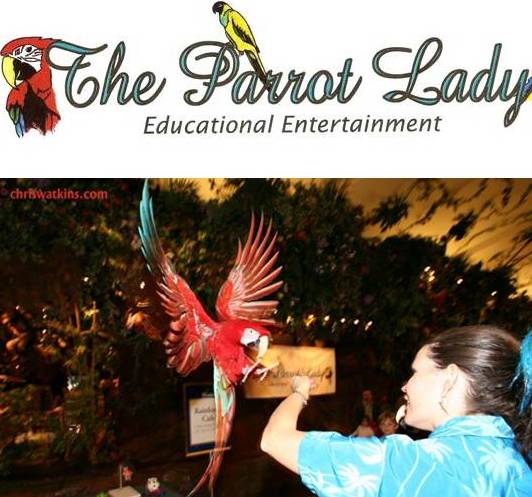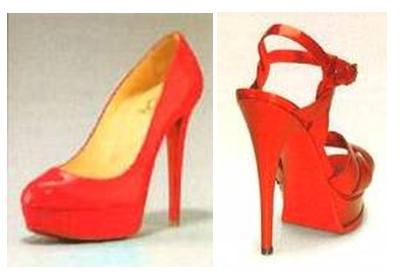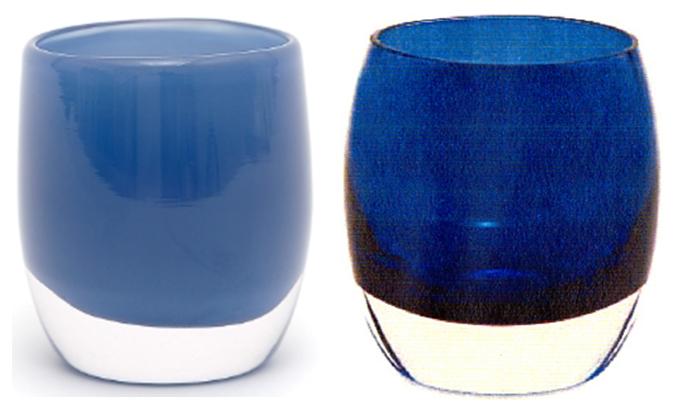Entries in Trademark Infringement (368)
Ezell's Case Illustrates Need to Decide Who Owns Mark Before Dispute Arises
 Plaintiff Ezell’s Fried Chicken, Inc.’s logo
Plaintiff Ezell’s Fried Chicken, Inc.’s logo
Fellow Seattle IP lawyer Gary Marshall put me onto this.
It’s a struggle over use of the restaurant name “Ezell’s Fried Chicken” between its founder, Ezell Stephens — now separated from the company — and the company’s board. Both parties now sell fried chicken in the Seattle area under the Ezell name.
Gary asks some good questions about who owns a company’s technology. The same questions can be asked about who owns the company’s trademark.
“Founders often neglect to put licenses between themselves and their company in writing. They just assume that the company can use the technology they create. But what happens when they are no longer associated with the company? Can the company continue to use the technology? Can the founder?”
Those are questions the court will have to decide. But as Gary points out, it needn’t be that way.
Decide from the outset who owns the trademark. The founder or the company? Then decide what happens if the company breaks up. Who will own it then?
Just last week I traded emails with a small business owner faced with this very problem. His partnership operated under a single brand. The partnership split up, and the partners are on their own. They now compete against each other offering the same services on the same turf. And both partners continue to operate under the partnership’s brand. Confusing to consumers? You bet.
It raises the same questions the Ezell’s litigants face. Which partner can use the brand? Can either? If one applies to register the mark, can the other object?
Don’t roll the dice with the court. That’s expensive and disruptive. Control your own fate and get these issues hammered out between partners, shareholders, and joint venturers when times are good. It might cost a bit in legal fees up front, but it’ll save you lots more down the road.
So what’s up with the Ezell’s case? The Western District sent it back to King County Superior Court — from which the case had been removed — finding plaintiff’s causes of action sound in state court, the court plaintiff had selected. It also awarded fees, finding the removal had been improper (though it later reduced the amount of the award).
Story on the Ezell’s dispute here.
The case cite is Ezell’s Fried Chicken, Inc. v. Stephens, No. 10-1424 (W.D. Wash.).
PTO Report Questions Whether a Problem Exists with Trademark Bullying
The U.S. Patent and Trademark Office has completed its study on trademark bullies (previous STL posts here and here).
The study was ordered by Congress at the behest of Sen. Patrick Leahy (D-VT), who folks may remember was unhappy when his constituent, the Rock Art Brewery, was pressured by Hansen Beverage Co. over the brewery’s use of VERMONSTER in connection with beer and Hansen’s use of MONSTER in connection with energy drinks.
Last year’s Trademark Technical and Confirming Amendment Act of 2010 gave the PTO a year to study the phenomenon of “trademark bullying” and to propose a solution.
The PTO responded in part by concluding there might not be a problem with trademark bullies after all.
The report states: “After careful review of the available information regarding trademark litigation tactics and comments received from concerned intellectual property stakeholders, it is unclear whether small businesses are disproportionately harmed by enforcement tactics that are based on an unreasonable interpretation of the scope of an owner’s rights.”
I’ve been on the receiving end of over-reaching enforcement. In some cases, my client had no rational choice but to back down. It just wasn’t worth it to prove they were right and the bully was wrong. The problem is real.
To the extent the PTO recognized the existence of a problem, it curiously found the current system provides the remedy: ”[B]ecause trademark enforcement is a private property rights litigation issue, if abusive tactics are a problem, such tactics may be addressed by the existing safeguards in the litigation system in the U.S. and by private sector outreach, support, and education relating to these issues.”
I’m not sure that conclusion logically follows from the premise.
Nonetheless, the PTO goes on to say: “However, to the extent small businesses are disproportionately adversely affected by such tactics because they lack the funds to hire counsel to defend against them, we believe the Federal Government can undertake the following actions:
- Engage the private sector about providing fee or low-cost legal advice to small businesses via pro bono programs and intellectual property rights clinics;
- Engage the private sector about offering continuing legal education programs focused on trademark policing measures and tactics;
- Enhance Federal agency educational outreach programs by identifying resources that enable small businesses to further their understanding of trademark rights, enforcement measures, and available resources for protecting and enforcing trademarks.”
These suggestions are fine, but what about addressing the problem through the market? I can’t say with certainty it would solve the problem, but what I think is needed is serious study about whether the Lanham Act should make an award of attorney’s fees to the prevailing party routine, rather than limiting an award to “exceptional” cases.
The PTO’s report discusses attorney’s fees in passing, but says the current possibility of a fees award already deters abuse: “[A]ttorneys’ fees appear to be a deterrent to trademark litigation abuse because trademark owners know that a successful defendant may recover legal fees where the plaintiff’s allegations of trademark infringement are so baseless as to be frivolous.”
What I think is baseless is this assertion. Again, the Lanham Act only authorizes courts to award fees in “exceptional,” i.e., rare, circumstances. If the fear of a fees award serves as an effective deterrent, why is it in some trademark owners’ interest to bully other trademark owners, and why is it in some trademark owners’ interest to back down when faced with bullying?
As the PTO recognized, the difficulty for small businesses is they can’t afford to push back against abusive trademark enforcement. Given that, wouldn’t punishing a losing trademark infringement plaintiff by requiring it to pay the successful defendant’s attorney’s fees deter over-reaching? Isn’t that what needs to be considered?
Now, I recognize that the chance of a massive fees award — no matter how remote — could deter a small business from enforcing legitimate trademark rights against a well-funded infringer. But on balance, I think making fees awards routine rather than rare would go a long way toward solving the trademark bulling problem.
And it is a problem.
The Parrot Lady vs. The Parrot Lady over "The Parrot Lady" Trademarks
 Screen shot from plaintiff’s “The Parrot Lady” Web site
Screen shot from plaintiff’s “The Parrot Lady” Web site
On April 22, Debbie Goodrich filed suit against Karen Allen in the Western District of Washington.
Plaintiff provides entertainment and other services under the name “The Parrot Lady.” Her complaint states she obtained a Washington business license under the name “The Parrot Lady Educational Entertainment” in 2001 and registered the parrotlady.com domain name in 2005.
Defendant owns a federal registration for THE PARROT LADY for “Exotic bird breeding and grooming.” The registration claims a first-use date in 1995. The complaint states that defendant owns a Torrance, Calif. sole proprietorship under the name “Birds & More” and maintains a website accessible at www.birdsandmore.com. The complaint alleges that defendant uses her mark in connection with bird-related goods and services.
Plaintiff alleges defendant or her representative has contacted a number of third parties complaining about plaintiff’s use of “The Parrot Lady” in advertising. The complaint states such third parties include Facebook, Critter Fest, and a Seattle-area YMCA, and those parties have removed advertisements publicizing plaintiff.
Plaintiff seeks an order declaring that her use of THE PARROT LADY does not infringe defendant’s rights in THE PARROT LADY and claims superior rights in the mark in Washington. She also seeks to cancel defendant’s registration, alleging it is generic “for a woman having expertise in breeding and grooming exotic birds, such as parrots.”
The case cite is Goodrich v. Allen, No. 11-687 (W.D. Wash.).
Shoe Spat Sparks Discussion About Color Trademarks
 Plaintiff Christian Louboutin’s (left) and
Plaintiff Christian Louboutin’s (left) and
defendant Yves Saint Laurent’s red soled shoes
The Washington Post Thursday reported on an interesting trademark lawsuit.
Women’s shoe designer Christian Louboutin has sued designer Yves Saint Laurent in the Southern District of New York over the latter’s use of red soles on its women’s shoes.
Christian Louboutin has a registered trademark for the color red in connection with the shape of the soles of women’s shoes. It’s Reg. No. 3376197; it’s been on the books in the United States since January 2008, with a claimed priority date of March 8, 2006. The complaint alleges Christian Louboutin has been the substantially exclusive user of red soles on women’s shoes in the United States since 1992.
Christian Louboutin alleges that Yves Saint Laurent’s soles are confusingly similar with plaintiff’s “Red Sole Mark.” The complaint goes so far as to allege that YSL is selling counterfeit Louboutin shoes.
But back to the article. It provides a good summary of the trademark principles at issue, something I love seeing in the mainstream press.
In short, Louboutin’s Red Sole Mark needs to have secondary meaning if it’s to be protected under U.S. trademark law as a color mark. That’s from the Supreme Court’s decision in Qualitex Co. v. Jacobson Prods. Co., 514 U.S. 159 (1995). But if the color mark has acquired secondary meaning — meaning that consumers associate the color with a single source — and the color serves no functional purpose, including an aesthetic purpose, then the color is perfectly protectable as a trademark. Think Tiffany’s robin’s egg blue color, also a registered (and extremely valuable) trademark.
Whether Louboutin’s red soles function as a trademark and don’t serve an aesthetic purpose remains to be seen. If its Red Sole Mark isn’t protectable as a trademark, it can be freely copied — at least as far as trademark law is concerned.
The fact its color mark is registered means the court will presume it’s protectable.
That said, for my money, the color’s part of the shoe’s aesthetics. But I claim no expertise in women’s footwear. None whatsoever.
The case cite is Christian Louboutin S.A. v. Yves Saint Laurent America, Inc., No. 11-2381 (S.D.N.Y.).
Glassybaby Sues Candle Holder Sellers for Trade Dress Infringement
 Plaintiff Glassybaby’s (left) and defendant Northern Lights’ candle holders
Plaintiff Glassybaby’s (left) and defendant Northern Lights’ candle holders
Since I recently posted slides from my talk on trade dress, I thought it was timely someone filed a product design claim in the Western District.
In March, Seattle-based Glassybaby, LLC, brought suit against competing candle holder seller Provide Gifts, Inc., d/b/a Red Envelope, and manufacturer Northern Lights Enterprises, Inc.
Glassybaby does not describe its trade dress (depicted above), but claims it is distinctive and that its designs are recognized by the consuming public as coming from plaintiff. It asserts claims for trademark infringement, dilution, dilution under Washington’s antidilution statute, and unfair competition.
Defendants have not yet filed an answer.
The case cite is Glassybaby, LLC v. Provide Gifts, Inc., No. 11-380 (W.D. Wash.).